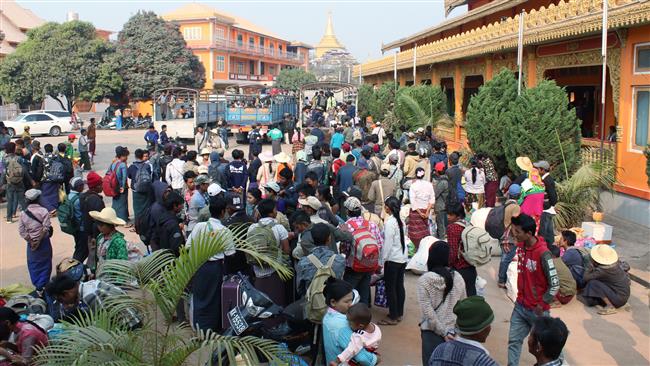
RNA - In a recent Reuters visit to the rugged area in southwestern Yunnan Province, aid workers and those displaced expressed fears of a more violent and protracted conflict than a previous flare-up in the Kokang region in early 2015.
"Every day, more people come," said Li Yinzhong, an aid manager in the camp, gesturing at the mostly Han Chinese refugees from Myanmar's Kokang region trudging through the reddish mud earth around rows of large blue huts where they sleep on nylon tarpaulin sheets.
Blue disaster relief tents provided by the Chinese also dotted the terraced sugarcane, maize and tea terraces flanking the mountainous winding road to Nansan. The town, close to the Kokang region of Myanmar's Shan State, is providing refuge for a stream of refugees that Chinese authorities estimate number more than 20,000.
The violence is a blow to efforts by Myanmar's de facto leader Aung San Suu Kyi, to reach a comprehensive peace agreement with Myanmar's ethnic minorities, some of them in rebellions spanning decades.
The conflict is also fraying ties between China and Myanmar, which Beijing has hoped could be a key gateway in its multi-pronged "One Belt One Road" strategy to promote economic links between China and Europe.
Kokang has close ties to China. The vast majority are ethnic Chinese speaking a Chinese dialect and using the yuan as currency.
The Kokang began fleeing when the rebel Myanmar National Democratic Alliance Army (MNDAA) launched a surprise raid on Myanmar police and military targets in the town of Laukkai, resulting in the deaths of 30 people on March 6.
In an "urgent notice" posted on Sunday on its official website, the MNDAA said the Kokang area was now in a "state of war" as fighting worsened.
On the Chinese side, paramilitary police have sent in battalions of reinforcements, mostly in readiness for disaster relief, according to Chinese officials who spoke on background.
Reuters saw seven Chinese armored personnel carriers moving west along the hilly road toward Myanmar and the relief camp sprawled across a muddy wasteland the size of 10 football fields.
The fresh unrest comes after fighting in early 2015 and in 2009 involving the MNDAA, both flare-ups displacing tens of thousands of people.
Ordnance has occasionally strayed into China, with five people in China killed in 2015 during a round of fighting then.
847/940